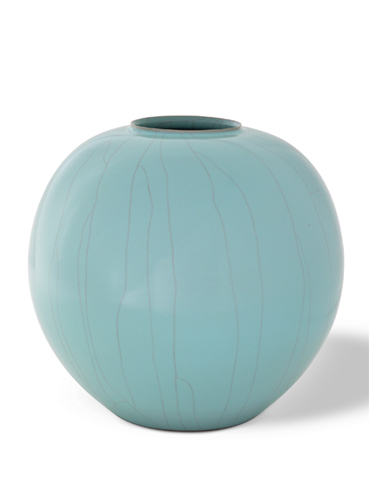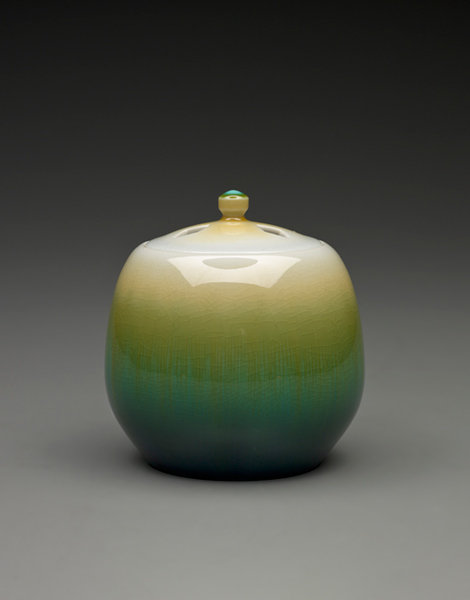Built largely around the treasured tea ceremony, pottery is a long-established tradition in Japan. The Indianapolis Museum of Art is showing a profound exhibition that explores the interface between historical tradition and modern innovation in ceramics produced by living masters.
With some potters self-taught and others part of an established pottery-making family spanning 11 generations, the Indianapolis Museum of Art has much to offer during “Tradition Reborn: Contemporary Japanese Ceramics.” Seven potters, many of whom are categorized as “Living National Treasures,” are featured in the show. Their designation is in recognition of their mastery of skills that are deemed to be of significant historic and cultural value.
Of particular focus in the exhibition are functional wares rather than abstracted or sculptural work. Their utility does not detract from their aesthetic beauty, as each object in the exhibition is an exquisite work of fine art. The focus on function is curator John Teramoto’s way of “emphasizing the historical roots” of the ceramic tradition in Japan. Teramoto also suggested, “Although it is wonderful to exhibit the work of potters designated as Living National Treasures, all the ceramics in this exhibition will continue to stand on their own merits as masterworks even if their makers’ names were to be lost. Just as historical works regarded as masterpieces today were ‘contemporary’ at the time of their creation, I firmly believe these works will also stand the test of time.”

Suzuki Sansei, “Celadon Globular Jar,” ca. 1990–1995, stoneware with crackled powder blue celadon glaze,
14.5 x 15 in. (c) Indianapolis Museum of Art 2015
A stunning highlight from the exhibition of 25 objects is Tokuda Yasokichi IV’s “Saiyu Censer” from 2002. This beautiful jar displays a fullness of form that is elegant in its simplicity. Yasokichi has given the vessel, slightly plump toward the bottom, just enough lift on the foot, allowing the piece to hover softly. Upon close inspection, one can appreciate the translucent polychrome glaze, which is illuminated by the brilliant white porcelain clay body beneath. The glaze itself begins at the top of the body as a soft white before graduating to yellow at the shoulder then transitioning to an exquisite green and deep royal blue at the bottom. This graduation of color is reversed on the lid of the vessel, which also displays cut holes.
“Tradition Reborn: Contemporary Japanese Ceramics” opened on July 31 and will show through July 17, 2016.
To learn more, visit the Indianapolis Museum of Art.
This article was featured in Fine Art Today, a weekly e-newsletter from Fine Art Connoisseur magazine. To start receiving Fine Art Today for free, click here.







